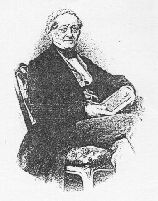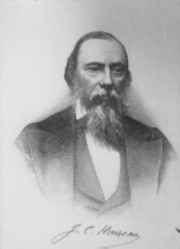History of Science, Medicine
and Technology.
Bibliography of Primary Sources:
Articles
There is no available database on old
scientific papers. There are, however, some very useful printed bibliographies.
The 17th and 18th centuries:
Reuss' Repertorium
The older one is Jeremias Reuss' (1750-1837)
Repertorium,
published in the early 19th century, that attempted to describe all articles
published in journals of scholarly societies:
-
REUSS, Jeremias David. Repertorium Commentationum a Societatibus
Litterariis Editarum, Secundum Disciplinarum Ordinem. Gottingae, Henricum
Dieterich, 1801-21. 16 vols.
The title of the book means: "Index of
Articles published by Scholarly Societies, arranged by discipline". This
monumental work included all scientific disciplines, medicine and technology.
Each of the 16 volumes is dedicated to a specific discipline, and articles
are classified according to subject. There is also an author index. The
subject headings and the editor's comments are written in Latin.
Thre is a recent reprint of this work:
-
REUSS, J. D. Repertorium Commentationum a Societatibus
Litterariis Editarum. New York: Burt Franklin, 1990.
For additional information, see http://www.scholarly-societies.org/history/reuss.html
The 19th century: the Catalogue
of Scientific Papers
During the 19th century and early 20th
century, the Royal Society of London sponsored a huge bibliographical
project, intended to produce an index of scientific papers published in
the main scientific journals of all countries, in all languages. The result
was a set of 19 volumes of encyclopaedia size:
-
ROYAL SOCIETY OF LONDON. Catalogue of Scientific Papers,
1800-1900. London, 1867-1902; Cambridge, 1914-1925. 19 vols.
There is a reprint of this very useful
work: ROYAL SOCIETY OF LONDON. Catalogue of scientific papers, 1800-1900.
Metuchen: Scarecrow Reprint Corp., 1968.
Several large libraries in the United
Kingdom co-operated with this project, providing information of the content
of their collections of periodicals. Every article published in the most
important scientific journals was included, but papers on medicine and
technology were not indexed. A large number of referees helped to select
what should be included in the Catalogue of Scientific Papers.
Publication was carried out in successive
series:
-
ROYAL SOCIETY OF LONDON. Catalogue of scientific papers
(1800-1863). London: Her Majesty's Stationery Office, 1867-1872. 6
vols.
Series 1: Vols. 1-6, with information about articles
that appeared in 1800-1863. The 6 volumes contain 5,743 pages.
-
ROYAL SOCIETY OF LONDON. Catalogue of scientific papers
(1864-1873). Edited by Henry White. London: Her Majesty's Stationery
Office, 1877-1879. vols. 7-8.
|
|
Series 2: Vols. 7-8, with information about articles
that appeared in 1864-1873. The 2 volumes contain 2,357 pages.
-
ROYAL SOCIETY OF LONDON. Catalogue of scientific papers
(1874-1883). Edited by Henry White, Alfred White, Henry Holt, Miss
Evelyn Chambers. London: C. J. Clay and Sons, 1891-1896. vols. 9-11.
ROYAL SOCIETY OF LONDON. Catalogue of scientific papers
(1800-1883). Supplementary volume. Edited by G. Griffith. London: C.
J. Clay and Sons, 1902. vol. 12.
Series 3: Vols. 9-11, with information about articles
that appeared in 1874-1883; Vol. 12, with supplementary information about
articles published from 1800 to 1883. The 4 volumes contain 3,773 pages.
-
ROYAL SOCIETY OF LONDON. Catalogue of scientific papers.
Fourth series (1884-1900). Edited by Herbert McLeod, Silvanus Thompson,
H. Forster Morley. Cambridge: Cambridge University Press, 1914-1925. vols.
13-19.
Series 4: Vols. 13-19, with information about
articles that appeared in 1884-1900. The 7 volumes contain 7,038 pages.
It is difficult to evaluate the total
number of references contained in the Catalogue of Scientific Papers.
Volumes 1 to 12 contain about 33 references per page, and volumes 13 to
19 contain about 55 references per page. The total number of entries is
probably between 770,000 and 800,000, describing articles from nearly 3,000
different serials.
Notice that each "reference" usually
contains information about a single article, but sometimes it contains
information about several versions/translations/editions of the same article.
Some "references" contain correction to previously published information,
or remissive information.
In each series, the papers were classified
according to the author name – that is, there is no subject classification.
Each entry included the author's name, title of the paper in the original
language (except in the case of non-european languages, such as Japanese),
abbreviation of the title of the periodical, volume, initial and final
pages, year of publication. The first volume of each series contained a
list of indexed periodicals, with the corresponding title abbreviations.
The whole set of 19 volumes have been
scanned for the Gallica project, and they can be downloaded, in PDF or
TIFF format, from the French Bibliothèque Nationale: http://gallica.bnf.fr.
The Royal Society project included
the production of a subject index for the whole period. Preparation of
the indexes began as the last volumes appeared, and it was to include 17
volumes. From 1908 to 1914, three subject indexes were prepared: v.1 for
Pure Mathematics (1908); v.2 for Mechanics (1909); v.3, pt.1 for Physics:
Generalities, Heat, Light, Sound (1912); and v.3, pt.2 for Physics: Electricity
and Magnetism (1914). The beginning of World War I interrupted this work,
that was never resumed.
-
ROYAL SOCIETY OF LONDON. Catalogue of Scientific Papers,
1800-1900: Subject Index. Edited by Herbert McLeod. Cambridge: University
Press, 1912-1914. 3 vols in 4 parts.
Thre is a reprint of the Index:
-
ROYAL SOCIETY OF LONDON. Catalogue of Scientific Papers,
1800-1900: Subject Index. Metuchen: Scarecrow Reprint Corp., 1968.
After the completion of the Catalogue
of Scientific Papers, the Royal Society began (in 1902) the publication
of the International Catalogue of Scientific Literature. This is
a subject index to the scientific publications appearing in each year,
describing the contents of about 1,800 periodicals. This publication was
also interrupted due to World War I, and was not resumed.
-
ROYAL SOCIETY OF LONDON. International Catalogue of Scientific
Literature, 1901-1914. London: Royal Society of London, 14 vols in
254 parts. London, 1902-1921. Reprint, NY: Johnson, 1968-69, 32 v.
From the 17th to the 20th
century: Poggendorff's Handwörterbuch
| Towards the middle of the 19th century,
Johann Christian Poggendorff began to develop a biographical and bibliographical
handbook. Each entry, in alphabetical author order, presents a short biography
and then a list of the works (books and articles) published by the author.
The bibliographical information is not complete, but nevertheless this
is a useful tool.
Only the exact sciences were included.
There is no subject index.
-
POGGENDORFF, Johann Christian (ed.). Biographisch-literarisches
Handwörterbuch zur Geschichte der exakten Wissenschaften. 2 vols.
Leipzig: Johann Ambrosius Barth, 1863.
|
|
Poggendorff's Handwörterbuch
was continued in successive series:
-
FEDDERSEN, Berend Wilhelm & OETTINGER, Arthur J. von
(ed.). J. C. Poggendorff's biographisch-literarisches Handwörterbuch
zur Geschichte der exakten Wissenschaften (1858 bis 1883). Vol. 3.
Leipzig: Johann Ambrosius Barth, 1898.
-
OETTINGEN, Arthur von (ed.). J. C. Poggendorff's
biographisch-literarisches Handwörterbuch zur Geschichte der exakten
Wissenschaften (1883 bis 1904). Vol. 4. Leipzig: Johann Ambrosius Barth,
1905.
-
WEINMEISTER, Paul (ed.). J. C. Poggendorff's biographisch-literarisches
Handwörterbuch für Mathematik, Astronomie, Physik, Chemie und
verwandte Wissenschaftgebiete (1904 bis 1922). Vol. 5. Leipzig: Verlag
Chemie, 1926.
-
STOBBE, Hans (ed.) J. C. Poggendorff's biographisch-literarisches
Handwörterbuch für Mathematik, Astronomie, Physik mit Geophysik,
Chemie, Kristallographie und verwandte Wissenschaftgebiete (1923 bis 1931).
Vol. 6 (4 partes). Leipzig: Verlag Chemie, 1936-1938.
-
ZAUNICK, Rudolph & SALIÉ, Hans (eds.). J. C.
Poggendorff biographisch-literarisches Handwörterbuch der exakten
Wissenschaften (1932 bis 1953). Vol. 7 (5 partes mais suplemento).
Berlin: Akademie-Verlag, 1956-1962.
-
SALIÉ, Hans, WEICHSEL, Lebrecht & KÖSTLER,
Margot (eds.). J. C. Poggendorff biographisch-literarisches Handwörterbuch
der exakten Wissenschaften (1932-1962). Vol. 7B (9 partes). Berlin:
Akademie-Verlag, 1967-1990.
The whole collection is now available
in CD-ROM: http://www.poggendorff.com/.
The electronic dictionary contains biographic and literary data on around
29,000 scientists. Price: 1,400.00 Euros.
From the 19th century onwards:
specific indexes
In the 19th century, as the number
of articles increased, scientists felt the necessity of specific indexes
(classified by subject) describing the literature published in each year.
Some scientific journals, besides publishing new papers, also include short
notices about articles published elsewhere. Some of the first specific
indexes published in the 19th century are:
-
Pharmaceutisches Zentralblatt (began in 1830), renamed
as Chemisch Pharmaceutisches Zentralblatt (1850) and Chemisches
Zentralblatt (1856)
-
Neues Jahrbuch für Mineralogie, Geologie und Palaeontologie
(began in 1833)
-
Die Fortschritte der Physik (began in 1844)
-
British Chemical Abstracts (began in 1849)
-
Répertoire de Chimie Pure, and Répertoire
de Chimie Appliquée (began in 1858)
-
The Zoological Record (began in 1864)
-
Jahrbuch über die Fortschritte der Mathematik
(began in 1868).
-
Beiblätter zu den Annalen der Physik (began in
1877)
-
Index Medicus (began in 1879)
-
Revue Semestrelle des Publications Mathématiques
(began in 1893)
-
Abstracts of Physical Papers from Foreign Sources,
published by the Physical Society of London (began in 1895)
-
Science Abstracts – Physics (began in 1898), later
called Physics Abstracts
In 1890 there appeared the Readers'
Guide to Periodical Literature, followed in 1907 by the International
Index to Periodicals, using keywords (instead of subject classification)
and presenting an index of papers from cultural and philosophical journals,
besides some general scientific journals.
There were about 70 scientific indexes
around 1900.
In the beginning of the 20th century,
there appeared other indexes, such as Chemical Abstract, Biological
Abstracts, etc. Those scientific indexes, that continue up to the present
time, are the best available tertiary source of information on scientific
paper published during the last century.
Specific subject bibliographies
Bibliographies on scientific books
on several subjects began to be published in the 17th century. Some of
the oldest are William Cooper's Catalogue of Chymicall Books, and
Cornelius Beughen's Bibliographia Mathematica, that included also
mechanics and astronomy, besides pure mathematics.
-
COOPER, William. A Catalogue of Chymicall Books. London,
1675.
-
BEUGHEM, Cornelius A. Bibliographia Mathematica et Artificiosa
Novissima Perpetuo Continuada, seu Conspectus Primus. Amstelodami:
Janssonio-Waesbergios, 1688.
Many other important scientific bibliographies
were published during the 17th and 18th century, including only books.
Up to the 18th century, scientific
papers were not as relevant and books, but in the 19th century the scientific
bibliographies began to include articles, besides books. One of the best
examples is Houzeau and Lancaster's outstanding Bibliographie Générale
de l'Astronomie, originally published in the late 19th century:
-
HOUZEAU, Jean Charles & LANCASTER, Albert. Bibliographie
Générale de l'Astronomie jusqu'en 1880. London: Holland
Press, 1964. 3 vols.
The content of this excelent bibliography
is now contained in the Astronomical Bibliography, produced by the Astronomisches
Rechen-Institut at Heidelberg (ARIBIB):
http://www.ari.uni-heidelberg.de/aribib/ |
|
As the several specific indexes to
scientific papers were created, the necessity of bibliographies decreased,
except for very specific ones, such as
-
LECAT, Maurice. Bibliographie de la Rélativité.
Bruxelles: M. Lonertin, 1924.
-
COMBRIDGE, J. T. Bibliography of Relativity and Gravitation
Theory, 1921-1937. London: King's College, 1965.
During the 20th century, the role of specific
research bibliographies was gradually transferred to review papers, that
usually contain a few hundred references.
RETURN TO THE MAIN DOCUMENT
Roberto
de Andrade Martins
roberto.andrade.martins@gmail.com
Group of History, Theory of Science and Teaching
Document version 1.1, 23 April 2003

